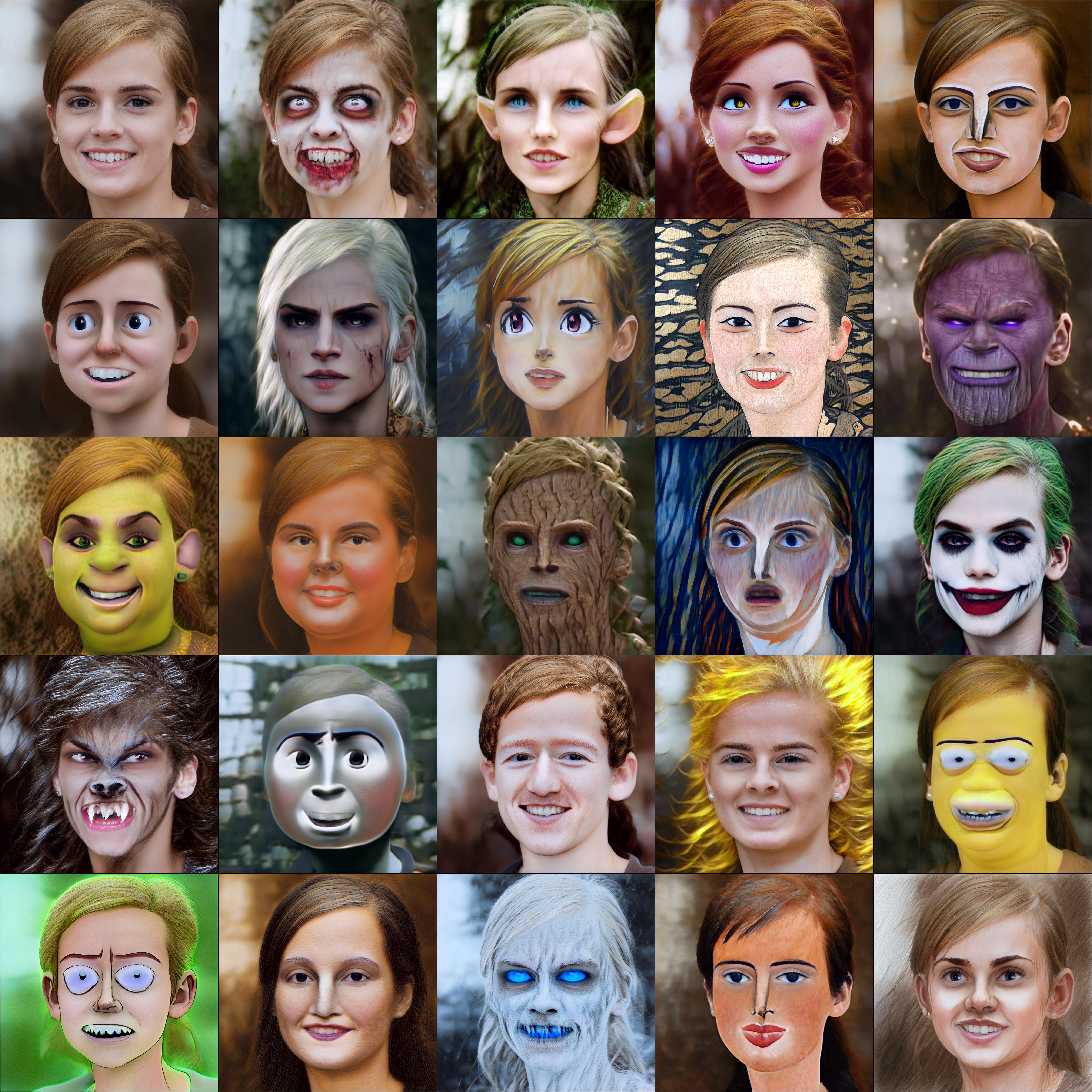Readme
This is an inference-only implementation of our work on converting image generators between domains using nothing more than a textual prompt.
The page currently supports inversion and cross-domain editing of real images, using 24 of our favorite models.
We recommend starting with output_style set to ‘all’ in order to view all currently available options. Once you found a style you like, you can generate a higher resolution output using only that style.
To use multiple styles at once, set output_style to ‘list - enter below’ and fill in the style_list input with a comma separated list of your desired models (e.g. ‘joker,anime,modigliani’).
For more information (or in order to train your own model) please visit our project page, our GitHub repository or our Colab notebook.
StyleGAN-NADA: CLIP-Guided Domain Adaptation of Image Generators
Rinon Gal, Or Patashnik, Haggai Maron, Gal Chechik, Daniel Cohen-Or
Abstract:
Can a generative model be trained to produce images from a specific domain, guided by a text prompt only, without seeing any image? In other words: can an image generator be trained blindly? Leveraging the semantic power of large scale Contrastive-Language-Image-Pre-training (CLIP) models, we present a text-driven method that allows shifting a generative model to new domains, without having to collect even a single image from those domains. We show that through natural language prompts and a few minutes of training, our method can adapt a generator across a multitude of domains characterized by diverse styles and shapes. Notably, many of these modifications would be difficult or outright impossible to reach with existing methods. We conduct an extensive set of experiments and comparisons across a wide range of domains. These demonstrate the effectiveness of our approach and show that our shifted models maintain the latent-space properties that make generative models appealing for downstream tasks.
Citation
If you make use of our work, please cite our paper:
@misc{gal2021stylegannada,
title={StyleGAN-NADA: CLIP-Guided Domain Adaptation of Image Generators},
author={Rinon Gal and Or Patashnik and Haggai Maron and Gal Chechik and Daniel Cohen-Or},
year={2021},
eprint={2108.00946},
archivePrefix={arXiv},
primaryClass={cs.CV}
}

